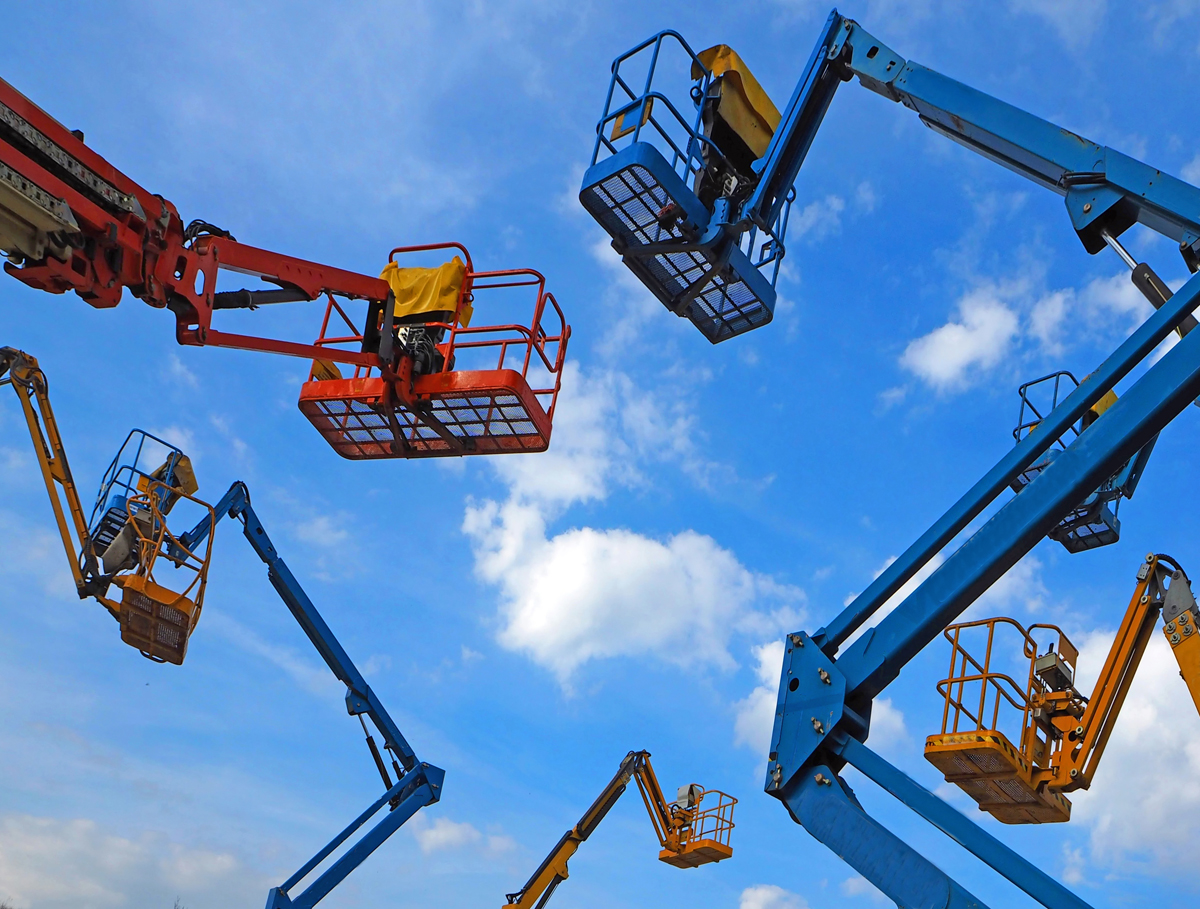Some signs are easy to install: Buy a $20 posthole digger, a few bags of concrete, a jar of Bengay muscle rub and you’re good to go. Installing a sign at heights, however, poses a new set of challenges. Obviously, you have to get the sign, installers and needed tools up to the install site – and keep them there. If this is a new and one-time proposition for your shop, we recommend you subcontract the work. Or, you can rent the proper equipment. But before deciding, survey the site well, know all the risks and have insurance to cover the work itself as well as the sign, should it later fall because of improper installation. Still, if you plan to venture into off-ground installations, you’ll want to either purchase or lease the required equipment and in that realm, you’ll be visiting crane and bucket truck dealers. What do you need to consider when making a purchasing decision? The first is a reputable crane truck dealer, one familiar with sign installation rigs and processes.
You’ll find numerous factors to ponder: your overall budget for equipment and hiring experienced personnel, your planned income from such operations, the types of signs you intend to install and how high or far you plan to reach to install those signs. The high and far configuration is critical because your crane arm may need to reach across obstacles, which requires a longer reach than would a simple vertical operation. For example, a 60-ft. crane may gain that height in a vertical reach, but appreciate that every degree of angle away from vertical (90°) reduces the height capacity accordingly. And, obviously, a lateral reach also affects the weight capacity, which means you’ll need to determine a lift capacity that will exceed the average sign weight – and the weight of any accompanying personnel and gear. Again, a crane truck dealer will help you with these configurations.
Consider too that crane and service trucks are large and there may be obstacles that prevent parking adjacent to the installation point. Also recognize that the truck outriggers must be deployed to ensure the stability of the unit when the crane or bucket is extended. This means the actual width and length of the vehicle, once in place, may increase significantly and reminds you that your installation survey should include on-ground operations as well as those at height. At this point also, your surveyor should determine if the ground or pavement can bear the gross vehicle weight.
Fuel type is also important when choosing a crane or bucket truck. For example, diesel fuel has a higher combustion efficiency than gasoline, so diesel engines produce more power in equivalent load/fuel-use situations (See Signshop Truck Engine Choices, ST April 2018, pg. 48) and tend to last much longer. Crane truck dealers tell us that modern diesel engines are equipped with precise, computer-controlled fuel management systems and that 98% of their buyers choose diesel.
Your dealer will also advise you on driver and crane operator licenses and certifications, but you should still research your state requirements for drivers, installers and crane operators. The Intl. Sign Assn. (ISA) recently posted an alert that said the Occupational Safety and Health Administration (OSHA) will require that all crane operators be certified by Nov. 10, 2018 (signs.org/crane). ISA also offers its Driver Vehicle and Equipment Inspection Report, which comprises carbonless NCR forms for pre-trip and post-trip inspection reports for your service vehicles that help you meet US Department of Transportation and OSHA requirements.
As you can see, much is involved in off-ground installations; thus, we recommend you review the ISA information and find a crane or bucket truck dealer that consistently works with signmakers, because they’ll talk your language and dispense sound advice on choices. Finally, think in terms of the majority of jobs and don’t worry about installations that may exceed your truck capacity because you can contract with commercial winch operators for those operations.
Advertisement



 Tip Sheet3 days ago
Tip Sheet3 days ago
 Business Management1 week ago
Business Management1 week ago
 Women in Signs2 weeks ago
Women in Signs2 weeks ago
 Real Deal4 days ago
Real Deal4 days ago
 Editor's Note1 week ago
Editor's Note1 week ago
 Maggie Harlow2 weeks ago
Maggie Harlow2 weeks ago
 Line Time2 weeks ago
Line Time2 weeks ago
 Product Buying + Technology1 week ago
Product Buying + Technology1 week ago







